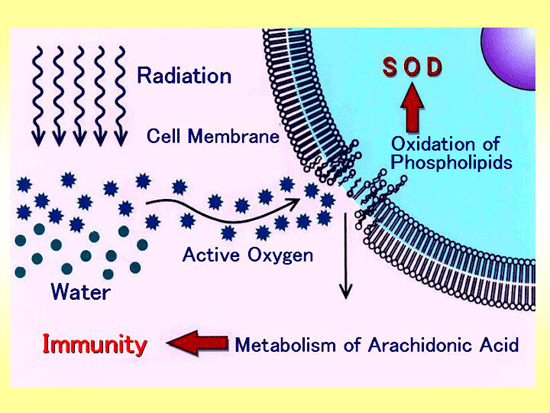Activities in radiation hormesis started at CRIEPI prompted by surprise at Dr. Luckey's announcement and the gathering of colleagues in the atomic energy field to compare theses.
In order to judge whether to initiate full-scale research into radiation hormesis, it was thought that it would be important first of all to at least confirm one case of the effects of radiation hormesis on their own.
Research students at Okayama University, Nagasaki University and other universities undertook animal experiments in 1988 with the cooperation of their universities and it was found that in a low dose region of about 10 to 100 times the amount of the background radiation that humans receive in one year:
(1) There is an increase in the of number of enzymes (SOD) that eliminate active oxygen (highly reactive with the substance), which is thought to be harmful when generated in large amounts.
(2) Lymphocytes (T lymphocytes), which have an immunity function, are activated.
The results of this research were compiled and published in the Nikkei science magazine in 1991 under the title, Is radiation in the ultralow doses good for the health?. It proposed an active oxygen hypothesis for the effects of radiation hormesis, which starts when active oxygen, which is generated when radiation reacts with moisture in the body, causes interaction with nearby cells.

|
